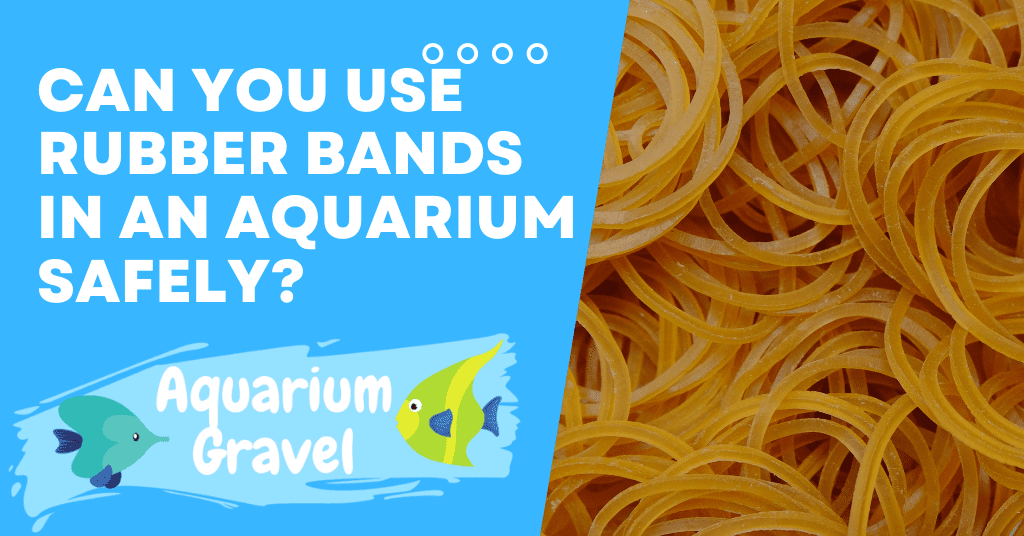Last Updated on March 24, 2022 by cmoarz
Rubber bands sure come in handy in many of life’s circumstances, but can you use rubber bands in aquariums safely? Are there any chemicals that can leech off rubber bands in aquarium water, Or do they pose any other danger to fish? We got you covered.
Is it safe to use rubber bands in the aquarium?
Table of Contents
The answer is yes! However, there are some caveats. First, you should only use new rubber bands that have not been used before. You should avoid colored bands as they may leech dyes.
Rubber bands will eventually start to degrade in the aquarium and begin to lose strength or fall apart in some cases where they have been left for a very long time.
So, if you’re using them for a particular long-term aquarium setup, it’s best to replace them every few months.
Other than that, using rubber bands in an aquarium is perfectly safe to use in an aquarium!
They won’t harm fish or the balance of the tank.
Just be sure to keep an eye on them and replace them as needed.
One thing to think about though is just because you can use them, does it mean you should?
Issues you will face when using rubber bands in an aquarium
While it is technically safe to use rubber bands submerged in aquarium water, there are better alternatives.
Thin string or twine is more recommended to use, especially when tying down plants for rooting.
The reason for this is rubber bands tend to be quite overpowering in their squeezing of plants, which can damage or kill the plant you are trying to keep tied down.
This is obviously counterproductive to having plants in the aquarium in the first place!
So that’s why it’s my recommendation to only use rubber bands on hard surfaces like filters and hardscape.
So while you can use rubber bands on softer materials such as plants, we recommend avoiding them if possible.
One thing to keep in mind is the string will also degrade over time like a rubber band will, although that should have no effect on the tank either.
When a string degrades it doesn’t lose its holding strength until it physically snaps or breaks, but a rubber band will lose its grip potential as it ages and deteriorates.
If you choose to use them, just be sure to keep a close eye on your plants and replace the rubber bands often. Make sure they aren’t overly tight whereas they will hurt, decapitate or kill the plant’s rhizomes.
Types of bands to avoid when using in an aquarium
Not all elastic bands are created equal and some are just not meant to be used in an aquarium. Avoid using the following types of bands:
1. Colored rubber bands as they may leech dyes
2. Old or worn-out rubber bands that may fall apart and have already started degrading (water speeds up this process)
3. Bands with metal clasps or other hardware that can rust or corrode (Hairbands for example should be avoided)
4. Bands with sharp edges that can cut or harm fish
5. Bands with adhesives on them (stickers, for instance) that will come off and potentially cloud the water or leech harmful glue
6. Thick rubber bands may not break down as easily as thinner ones and can damage plants over time.
7. Non-aquarium-safe rubber bands such as those used for office supplies or home repairs. (Check chemical makeup/materials on the packaging)
If unsure, it’s always best to ask the pet store specialist or another experienced aquarium keeper before using any type of band in your tank. Or just stick to string.
In conclusion, rubber bands can be used safely in an aquarium, provided you know what they are made of and are dye-free. There are better alternatives that we recommend using instead, such as twine or plastic ties.
About
Owner of AquariumGravel.com and also owner of actual Aquarium Gravel believe it or not! ;). Setting up beautiful aquarium sceneries and habitats since I was very young. Enjoy!
- Web |
- More Posts(290)

